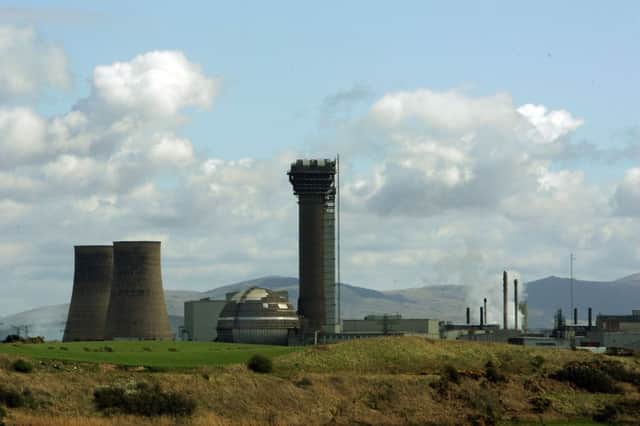Comment: Ten myths concerning nuclear power


Civil nuclear power’s historical links with nuclear weapons (and Chernobyl, Fukushima and suchlike) colours our perceptions of this important source of energy. We don’t eschew high explosives for their many valuable uses because they can kill people when abused. We keep driving cars despite the daily death toll.
The fruits of technology always present us with the Faustian dilemma of use for good or evil. The safe application of knowledge depends on the effectiveness of democracy, regulation and governance. Civil nuclear power suffers from its unfamiliarity to the public. This needs correcting by its promoters and by those in a position to influence public attitudes; they need to engage effectively with the public and encourage nuclear opponents to adopt an objective approach to the evidence.
Advertisement
Hide AdAdvertisement
Hide Ad1. Too dangerous? Objective examination of accident statistics for all fuels for deaths per unit of energy transformed shows that civil nuclear power generation has the best safety record. That includes the consequences of Chernobyl and Fukushima.
2. Causes cancer? Risks of cancer due to exposure to radiological hazards from civil nuclear power are extremely low, much lower than the risks from granite in Aberdeen, or from the use of diagnostic and therapeutic radioactivity in medicine (risks which are still heavily outweighed by the benefits). Scientists recognise that nuclear radiation limits are actually set lower than necessary.
3. Vulnerable to terrorism? Terrorists have many far easier targets than nuclear power plant. Why should they waste their limited resources on the toughest nut to crack? If they penetrated the multiple lines of defence at a civil nuclear plant, they would still be faced with the extraordinary difficulty of handling nuclear material or of creating anything other than minor damage with commercial, but not safety consequences.
4. No solution to waste disposal? Solutions to storage of high level nuclear waste are under construction in Scandinavia. The volumes of nuclear waste produced for the energy we need are very small. Your lifetime’s energy requirement would produce nuclear waste about the size of a large dinner plate. Much of it can be reprocessed to create further useful fuel, so it’s better to keep it together in a well-protected store until we decide to use it to produce more electricity, for example using fast reactors.
5. Too expensive? Independent Department of Energy and Climate Change cost comparisons for 2018 show nuclear at 65–85 £/MWh, compared with all other sources above 75 £/MWh. Electricity in France is much cheaper than elsewhere in Europe because of nuclear dominance.
6. Unnecessary; and safer alternatives? The relative complexity of converting nuclear fuel into electricity makes it wise to consider simpler alternatives where they exist. When nuclear power can be displaced by easier alternatives at a reasonable price, then that is the time to phase it out. In the meantime, nuclear power makes sense. Methods of generation that cannot become competitive in the market are unlikely to be used long-term. We should continue to develop nuclear power because even longer-term resources may emerge from nuclear.
7. Resources of nuclear fuel are limited? Uranium sources will far outlast the likely period of need and current oil and gas reserves. Before we run out of these, new technology is likely to have delivered promising alternatives: renewables; fusion; and all those discoveries we can’t even imagine, yet. At present, the proportion of available energy that power stations extract from uranium is very small, this will improve progressively as new reactor designs evolve. The abundance of thorium as an alternative fuel for nuclear reactors makes this resource effectively limitless.
8. Weapons proliferation? This must be managed through international inspections and regulation, and reuse of weapons-grade material. Nuclear fuel is easy to detect. Significant proportions of nuclear “waste” are already recycled into nuclear fuel for electricity. The USA has bought substantial quantities of old Soviet military waste and converted it into electricity, thereby reducing the risk of legacy weapons material getting into the wrong hands. The substantial quantity of plutonium stored at Sellafield can readily be converted to electricity, and the UK government has a US proposal to provide that capability. This would also help towards reducing potential sources of weapons grade material.
Advertisement
Hide AdAdvertisement
Hide Ad9. The technology is obsolete? There are many alternative designs under development around the world. All of these are progressively building in more passive safety features.
10. You think it doesn’t make sense? On a whole-life analysis carbon emissions are much lower than its competitors; the real evidence on safety and cost is clearly favourable; the operating record for reliability is impressive.
New nuclear build is about to take off.
Do you still think it doesn’t make sense?
• Keith Burns is a member of Scientific Alliance Scotland: www.scientific-alliance.org
SEE ALSO